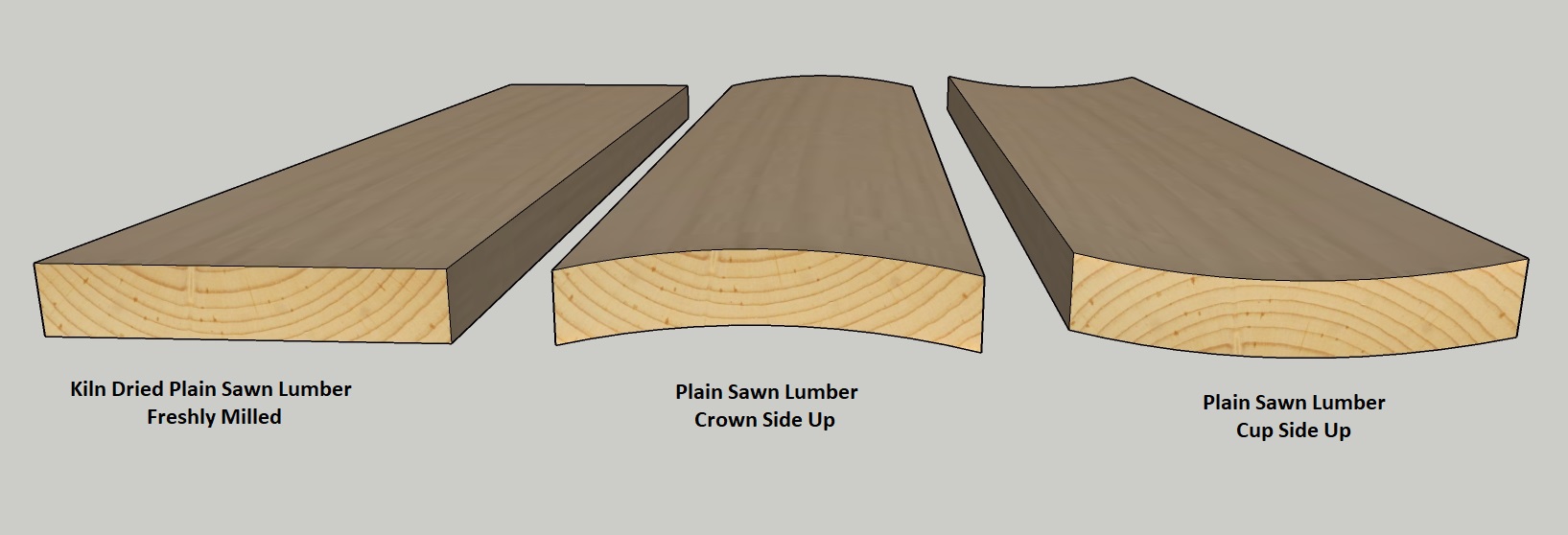Crown Side Up!
Written By: Michael Papp
Posted: 10/6/2021
Tips for Installing Ramp Decks
We frequently revisit old wheelchair ramp and landing installations to replace rotten-out deck boards. The combination of heat and moisture in the south is especially tough on wood. Ramps that are painted or have an opaque stain or sealant will hold up much longer, but you can do a simple thing when you build a ramp to increase the life of the decking significantly: Install the boards crown side up!

The crown is the curvature of the board that you will see when looking down its narrow edge. Lumber from freshly cut wood will cup toward the bark side as it dries. Cut lumber that is kiln-dried, then milled to its final size, will cup away from the bark side.
When building a ramp, you will most likely use plain-sawn kill-dried lumber, such as 5/4 (Five Quarter) deck board, which will tend to form a cup or crown. In the photo above, the board was cut from the tree’s center, as you can see the round rings in the wood grain. The wood is cupping away from the center of the tree toward the bark side.

When boards are installed crown side down, like the board in the photo, it will warp over time to hold water on the deck surface longer, which encourages rot. An installer that takes the time to glance at the end of each board before securing it can install the crown side up. If the board cups, it will encourage water to drain off the surface, prolonging the life of your ramp. Boards with grain almost vertical through the wood (quartersawn) are more stable and installed either side up.


